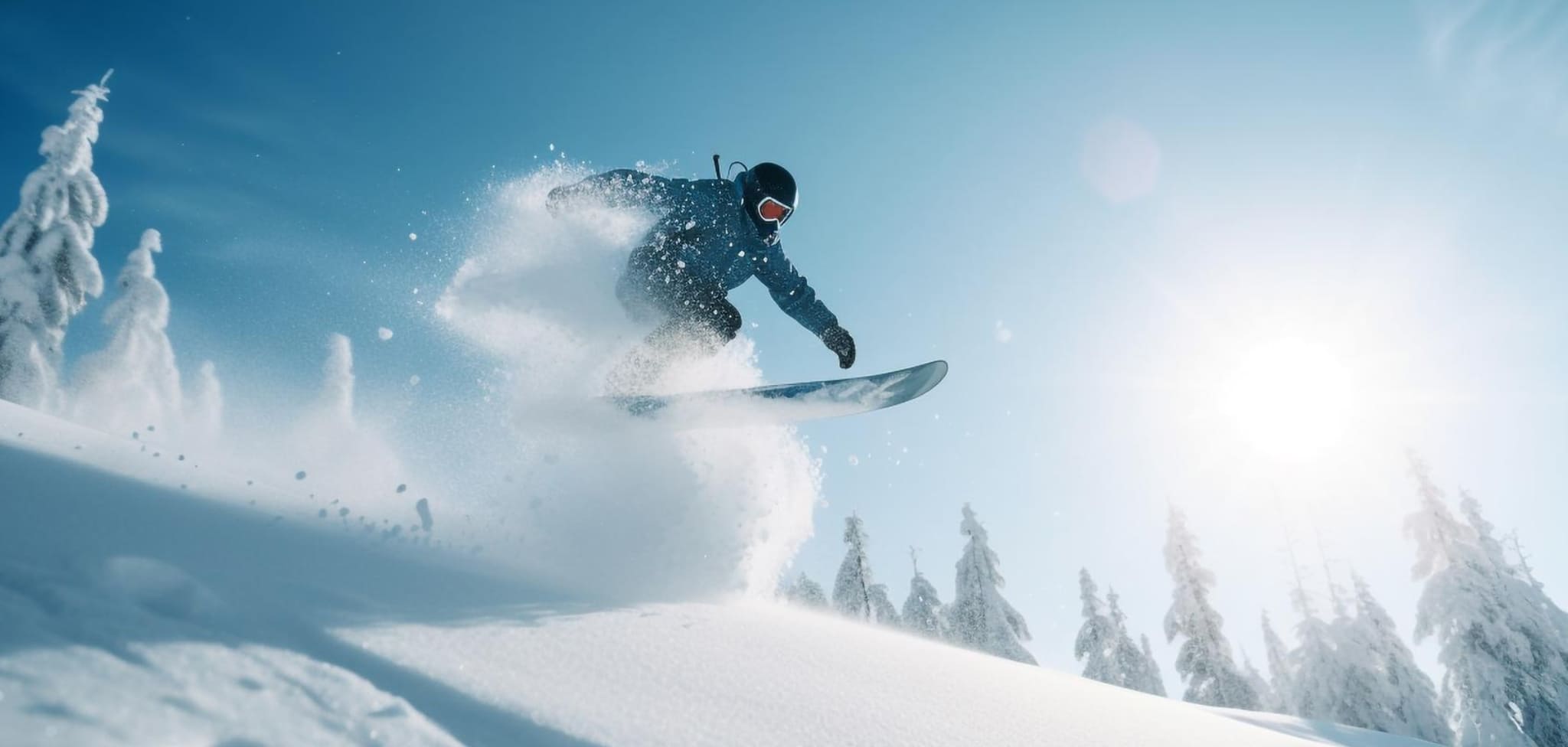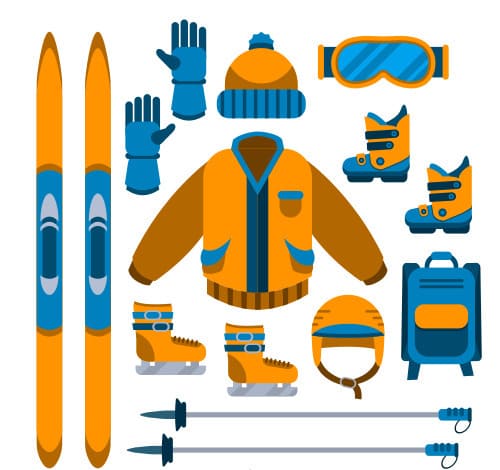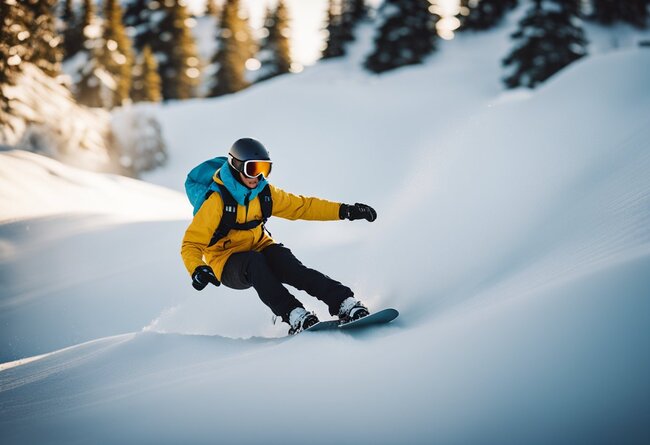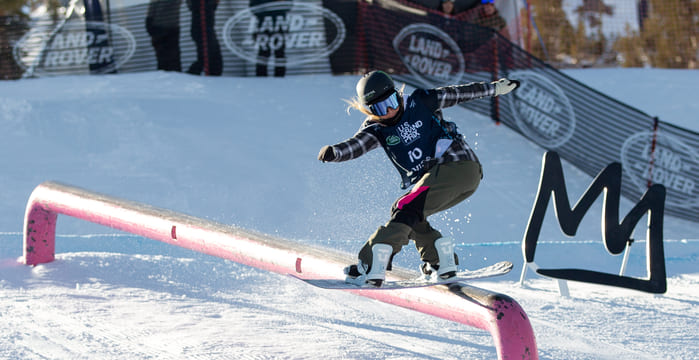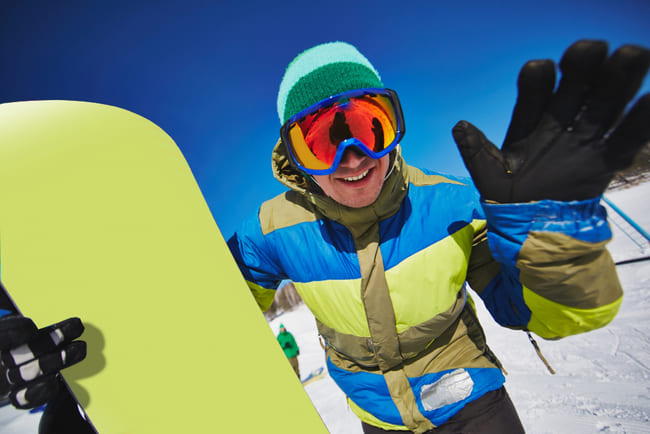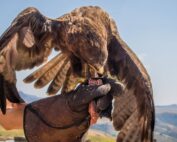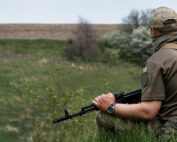Snowboarding as a Hobby: Tips and Tricks for Beginners
Snowboarding as a hobby is a thrilling way to enjoy the winter season. It’s a sport that combines athleticism, creativity, and adrenaline, making it a popular choice for people of all ages and skill levels. Whether you’re a beginner or an experienced rider, snowboarding offers a unique experience that is both challenging and rewarding.
One of the main draws of snowboarding is the feeling of freedom and exhilaration that comes with gliding down a mountain. It’s a chance to escape the stresses of daily life and immerse yourself in the beauty of nature. Snowboarding also provides an opportunity to push yourself and improve your skills, whether you’re learning how to carve turns or attempting more advanced tricks.
Despite the physical demands of the sport, snowboarding is also a social activity that can be enjoyed with friends and family. Many ski resorts offer group lessons and guided tours, making it easy to connect with other riders and share in the excitement of the sport. Whether you’re looking for a solo adventure or a fun group activity, snowboarding is a hobby that offers something for everyone.
History of Snowboarding
Snowboarding is a relatively new sport that has gained immense popularity in recent years. It is a winter sport that involves sliding down snow-covered slopes on a board. The origins of snowboarding can be traced back to the 1920s when people used to slide down hills on wooden boards. However, it wasn’t until the 1960s that modern snowboarding was born.
The first snowboard was invented in 1965 by Sherman Poppen, who was an engineer from Michigan. He created a toy for his daughter by attaching two skis together and adding a rope to the front to make it easier to steer. This toy caught the attention of other children, and soon, Poppen started selling it as the “Snurfer.” The Snurfer was the first commercially successful snowboard, and it paved the way for the modern snowboard.
In the 1970s, snowboarding started to gain popularity, and people began to experiment with different board designs and riding styles. In 1982, the first National Snowboarding Championship was held in Vermont, and in 1985, the first World Cup was held in Austria. Snowboarding was finally recognized as a legitimate sport.
In 1998, snowboarding was included in the Winter Olympics for the first time. Since then, it has become one of the most popular events at the Winter Olympics. Snowboarding has also given rise to other snow-related sports such as freestyle skiing, snowmobiling, and snowskating.
Today, snowboarding is a popular hobby that attracts millions of people from all over the world. It has evolved into a sport that offers a variety of riding styles, including freestyle, freeride, and alpine. Snowboarding has come a long way since its humble beginnings, and it continues to grow and evolve with each passing year.
Basic Equipment for Snowboarding
Snowboarding is an exciting sport that requires specific equipment to ensure a safe and enjoyable experience. In this section, we will discuss the essential equipment needed for snowboarding.
Snowboards
The most crucial piece of equipment for snowboarding is the snowboard itself. When choosing a snowboard, it is essential to consider your skill level, riding style, and size. Beginners should choose a board that is easy to maneuver and provides stability. All-mountain boards are a great choice for beginners as they are versatile and can handle various terrains. Freestyle boards are more flexible and are designed for park riding, while powder boards are designed for deep snow.
Bindings
Bindings connect the snowboarder’s boots to the snowboard and are an essential part of the setup. They come in various styles, including strap-in, step-in, and hybrid bindings. Strap-in bindings are the most common and are easy to adjust, while step-in bindings are quicker to get in and out of but offer less support. Hybrid bindings combine the best of both worlds.
Snowboarding Boots
Snowboarding boots are another critical piece of equipment that provides support and comfort while riding. They come in soft, medium, and stiff flex, with softer boots being more forgiving and easier to maneuver. Stiffer boots provide more support and control but require more skill to use effectively. It is essential to choose boots that fit correctly and provide adequate support for your riding style.
Snowboarding Outfit
The right outfit is crucial for staying warm and dry while snowboarding. Layering is key, with a base layer to wick away sweat, a mid-layer for insulation, and an outer layer to protect against wind and snow. Waterproof and breathable fabrics are essential to keep you dry and comfortable. Additionally, goggles, gloves, and a helmet are necessary for protection and visibility.
In summary, snowboarding requires specific equipment to ensure a safe and enjoyable experience. The most crucial pieces of equipment are the snowboard, bindings, boots, and outfit. It is essential to choose equipment that is appropriate for your skill level, riding style, and size, and to ensure that it fits correctly and provides adequate support and protection.
Safety Measures in Snowboarding
Snowboarding is an exciting and fun hobby, but it can also be dangerous if proper safety measures are not taken. Here are some essential safety measures that every snowboarder should keep in mind.
Protective Gear
Wearing proper protective gear is crucial for snowboarders of all skill levels. The following protective gear is recommended:
- Helmet: A helmet is the most important piece of protective gear for snowboarders. It can prevent head injuries in case of falls or collisions.
- Wrist Guards: Wrist guards can prevent wrist injuries that are common in snowboarding. It is recommended to wear gloves with internal wrist protection.
- Goggles: Goggles are essential for protecting eyes from snow glare and wind. They also improve visibility in low-light conditions.
- Body Armor: Body armor can protect the torso, back, and arms from injuries. It is especially important for advanced snowboarders who perform tricks and jumps.
Snowboarding Etiquette
Snowboarding etiquette is essential for safety on the slopes. Here are some important rules to follow:
- Stay in Control: Snowboarders should always stay in control and be aware of their surroundings. They should not go too fast or take risks that could endanger themselves or others.
- Observe Signs and Markings: Snowboarders should observe all signs and markings on the slopes. They should not go off-limits or enter closed areas.
- Yield to Others: Snowboarders should yield to other skiers and snowboarders on the slopes. They should not stop in the middle of the slope or block the way of others.
- Use Proper Communication: Snowboarders should use proper communication when passing or overtaking others on the slopes. They should use hand signals or verbal cues to indicate their intentions.
By following these safety measures, snowboarders can enjoy their hobby safely and reduce the risk of injuries.
Benefits of Snowboarding
Snowboarding is a popular winter sport that offers numerous benefits to both physical and mental health. Here are some of the benefits of snowboarding:
Physical Health Benefits
Snowboarding is a great way to stay active during the winter months. It is a full-body workout that engages various muscle groups, such as the legs, core, and upper body. It helps to improve balance, coordination, and flexibility. According to Experts, snowboarding burns between 300 and 600 calories per hour, depending on the intensity of the activity. It is an excellent cardiovascular exercise that can help to strengthen the heart and lungs.
In addition, snowboarding helps to improve bone density and joint health. The impact of snowboarding on the joints and bones helps to stimulate the growth of new bone tissue and strengthen the existing bone tissue. This can help to reduce the risk of osteoporosis and other bone-related conditions.
Mental Health Benefits
Snowboarding is not just a physical activity, but it also has numerous mental health benefits. It is a great way to reduce stress and anxiety. When snowboarding, individuals are focused on the present moment, which helps to clear the mind reduce anxiety levels, and boost mood.
Moreover, snowboarding can help to improve self-esteem and confidence. Learning and mastering new snowboarding skills can be a rewarding experience that can boost self-esteem and confidence levels. It also helps to improve mental toughness and resilience, as snowboarding requires individuals to push themselves out of their comfort zones and overcome challenges.
Learning to Snowboard
Snowboarding is a thrilling hobby that can be enjoyed by people of all ages and skill levels. However, it can also be intimidating for beginners who are just starting out. Fortunately, there are many resources available to help people learn how to snowboard.
Snowboarding Lessons
One of the best ways to learn how to snowboard is by taking lessons from a qualified instructor. Many ski resorts offer group and private lessons for beginners. These lessons typically cover the basics of snowboarding, such as how to stand on the board, how to turn, and how to stop. Instructors can provide feedback and guidance to help beginners improve their technique and build their confidence on the slopes.
Here are some of the Best Places to learn how to Snowboard for Beginners in the USA
Self-Learning
For those who prefer to learn on their own, there are also many resources available. Online tutorials, instructional videos, and snowboarding books can provide valuable information and guidance. It’s important to start with the basics and practice in a safe and controlled environment, such as a beginner slope or a snowboarding park designed for beginners.
Regardless of the method chosen, it’s important to remember that learning to snowboard takes time and practice. It’s important to be patient, persistent, and willing to make mistakes and learn from them. With dedication and practice, anyone can learn how to snowboard and enjoy this exciting hobby.
Competitive Snowboarding
Competitive snowboarding is a popular option for those who want to take their snowboarding skills to the next level. There are many snowboarding events held around the world, ranging from local competitions to international tournaments. These events provide an opportunity for snowboarders to showcase their skills and compete against other riders.
Snowboarding Events
Snowboarding is a diverse sport with a variety of disciplines and events. Here’s a brief overview of some of the snowboarding events:
Freestyle: riders perform tricks, spins, and flips in terrain parks or on natural features like cliffs and jumps. It’s all about creativity and style, and the emphasis is on individual expression.
Halfpipe: involves riders executing tricks and aerial maneuvers in a U-shaped snow-covered halfpipe. Athletes use the walls of the halfpipe to gain momentum and perform tricks high above the pipe.
Slopestyle: combines elements of freestyle and includes a course with a series of jumps, rails, and other features. Riders are judged on their creativity and the difficulty of their tricks on the course.
Boardercross: also known as snowboard cross, is a high-speed racing event where multiple riders compete on a downhill course filled with jumps, banked turns, and other obstacles. It’s an action-packed event where the first rider to cross the finish line wins.
Big Air: focuses on a single, enormous jump where riders launch themselves into the air to perform one massive trick. Judges assess the height, style, and execution of the trick, and athletes aim for maximum amplitude and style.
Snowboarding competitions offer a dynamic stage for riders to showcase their skills and passion for the sport. These events are integral to the snowboarding community, providing a platform for athletes to compete on a global scale and promote the exhilarating world of snowboarding. Let’s explore three major competitions that play a pivotal role in the snowboarding scene:
1. The Winter X Games:
Hosted and organized by ESPN, the Winter X Games stand out as one of the premier events in the world of extreme sports. Beyond snowboarding, this annual extravaganza features a range of winter sports, from skiing to snowmobiling. The X Games are celebrated for pushing the boundaries of what’s possible in extreme sports, making them a significant platform for athletes to demonstrate their prowess and ingenuity. For snowboarders, it’s a stage to unveil their most daring tricks and maneuvers, captivating audiences and earning recognition in the process.
2. The FIS Snowboarding World Cup:
The FIS (International Ski Federation) Snowboarding World Cup is a globe-trotting competition series that spotlights the versatility of snowboarding. With events held in various countries, this series encompasses a wide array of disciplines, including parallel giant slalom, snowboard cross, halfpipe, and slopestyle. It serves as an opportunity for snowboarders to not only accumulate valuable points but also compete at an international level. The FIS Snowboarding World Cup is where athletes refine their craft and represent their nations, adding depth and diversity to the snowboarding calendar.
3. The Winter Olympics:
Since its debut in 1998, snowboarding has been a vibrant part of the Winter Olympics, gaining widespread popularity and recognition through this prestigious event. The Winter Olympics host a spectrum of snowboarding disciplines, ranging from the gravity-defying halfpipe and the stylish slopestyle to the exhilarating snowboard cross and precision-focused parallel giant slalom. It’s on the grand stage of the Olympics that snowboarders from around the world have the privilege of representing their countries and competing for Olympic glory. Here, the finest technical skills, artistic creativity, and unwavering courage converge, making it the ultimate showcase of snowboarding excellence.
In this realm of snowboarding, riders develop specialized expertise in their preferred disciplines, allowing them to shine in their chosen fields. Each of these competitions doesn’t just honor the technical skills but also celebrates the artistic flair and adventurous spirit that defines the essence of snowboarding. It’s an electrifying world where athletes transcend boundaries and soar to new heights, leaving spectators in awe of their remarkable talents.
Snowboarding Culture
Snowboarding is more than just a sport or a hobby; it’s a culture that brings people together. From the way snowboarders dress to the way they interact with each other, there is a unique culture surrounding this activity that has developed over the years.
One of the most distinctive features of snowboarding culture is the fashion. Snowboarders tend to favor baggy pants, oversized jackets, colorful beanies, and perhaps a flair of facial hair. This style is not just for show; it allows for a greater range of motion and flexibility while riding. Snowboarding culture also encourages individuality and self-expression, so you’ll see plenty of unique and personalized gear on the slopes.
Another important aspect of snowboarding culture is the sense of community and camaraderie. Snowboarders often ride in packs, sharing the experience and pushing each other to improve. This sense of togetherness extends beyond the slopes, as many snowboarders participate in events and gatherings that celebrate the culture and lifestyle surrounding the sport.
Snowboarding culture also places a strong emphasis on environmentalism and sustainability. Many snowboarders are passionate about preserving the mountains and natural environment where they ride. The “Leave No Trace” ethos is a common mantra among snowboarders, who strive to minimize their impact on the environment and protect the places they love to ride.
Overall, snowboarding culture is a vibrant and inclusive community that welcomes people of all ages, genders, and skill levels. Whether you’re a seasoned pro or a beginner hitting the slopes for the first time, there’s a place for you in the snowboarding community.
Challenges in Snowboarding
While snowboarding can be a thrilling and enjoyable hobby, it also comes with its fair share of challenges. Here are some of the most common challenges that snowboarders face:
- Learning curve: Snowboarding is not an easy sport to learn. It requires balance, coordination, and strength. Beginners may find themselves falling frequently and struggling to get up. However, with practice and patience, most people can become proficient snowboarders.
- Weather conditions: Snowboarders are at the mercy of the weather. Poor weather conditions, such as heavy snowfall or high winds, can make it difficult or even dangerous to snowboard. It’s important to check the weather forecast before hitting the slopes and to dress appropriately for the conditions.
- Injuries: Snowboarding can be a risky sport, and injuries are not uncommon. Common injuries include wrist fractures, sprains, and concussions. It’s important to wear protective gear, such as a helmet, wrist guards, and knee pads, to minimize the risk of injury.
- Cost: Snowboarding can be an expensive hobby. Equipment, lift tickets, and lessons can add up quickly. However, there are ways to save money, such as buying used equipment or purchasing lift tickets in advance.
- Crowds: Popular ski resorts can get crowded, especially on weekends and holidays. Crowds can make it difficult to find a good spot to snowboard and can increase the risk of collisions.
While these challenges may seem daunting, they can also be part of the thrill of snowboarding. Overcoming these challenges and improving one’s skills can be incredibly rewarding.
If you’re looking for fantastic snowboarding destinations, we’ve prepared a comprehensive guide covering the best snowboarding areas. Learn more in our article: The Ultimate Guide to the Best Snowboarding Destinations
.
Frequently Asked Questions
What are some beginner tips for snowboarding?
For beginners, it’s essential to take things slow and start with the basics. Some tips include taking lessons from a qualified instructor, practicing on easy slopes, and wearing appropriate safety gear. It’s also important to learn how to fall correctly to avoid injuries.
What are some popular snowboarding destinations?
There are many popular snowboarding destinations around the world, such as Whistler Blackcomb in Canada, Chamonix in France, and Niseko in Japan. In the United States, popular destinations include Vail, Aspen, and Park City.
What equipment is necessary for snowboarding?
The essential equipment for snowboarding includes a snowboard, boots, bindings, and appropriate clothing such as waterproof pants and jackets. Other useful equipment includes helmets, goggles, and gloves.
What are some safety precautions to take while snowboarding?
Safety is paramount while snowboarding. Some safety precautions include wearing appropriate safety gear, staying within your skill level, following the rules of the slopes, and being aware of other skiers and snowboarders around you. It’s also important to stay hydrated and take breaks when needed.
What are some common injuries associated with snowboarding?
Snowboarding can be a risky sport, and injuries are not uncommon. Common injuries include wrist fractures, head injuries, and knee injuries. It’s essential to take proper safety precautions and wear appropriate safety gear to minimize the risk of injury.
What are some exercises to improve snowboarding skills?
Some exercises that can help improve snowboarding skills include balance exercises, leg exercises such as squats and lunges, and core strengthening exercises. Yoga and other flexibility exercises can also be beneficial for improving balance and flexibility on the slopes.
RECENT POSTS
History of Baseball
History of Baseball: From Its Origins to Modern TimesBaseball is one of the most popular sports in the United States, with millions of fans tuning in to watch games each year. The sport has a [...]
Hunting Falconry
History of Hunting Falconry: An Overview of Falconry's Evolution and Significance Are you interested in learning about the ancient practice of hunting with trained birds of prey? Falconry has been practiced for thousands of [...]
Hunting Destinations in 2024
Hunting Destinations in 2024: Top Picks for Avid Hunters Are you looking for exciting hunting destinations to explore in 2024? Whether you're a seasoned hunter or just starting, there are plenty of options available [...]
History of hunting dogs
Explore the History and Significance of Hunting Dogs: A Comprehensive Guide If you're a hunting enthusiast, then you know the importance of having a reliable hunting dog by your side. Hunting dogs have been [...]
Hunting as a Hobby
Hunting as a Hobby: An Overview Hunting is a popular outdoor activity enjoyed by millions of people worldwide. While some hunt for food, others do it as a hobby. Hunting as a hobby can [...]

